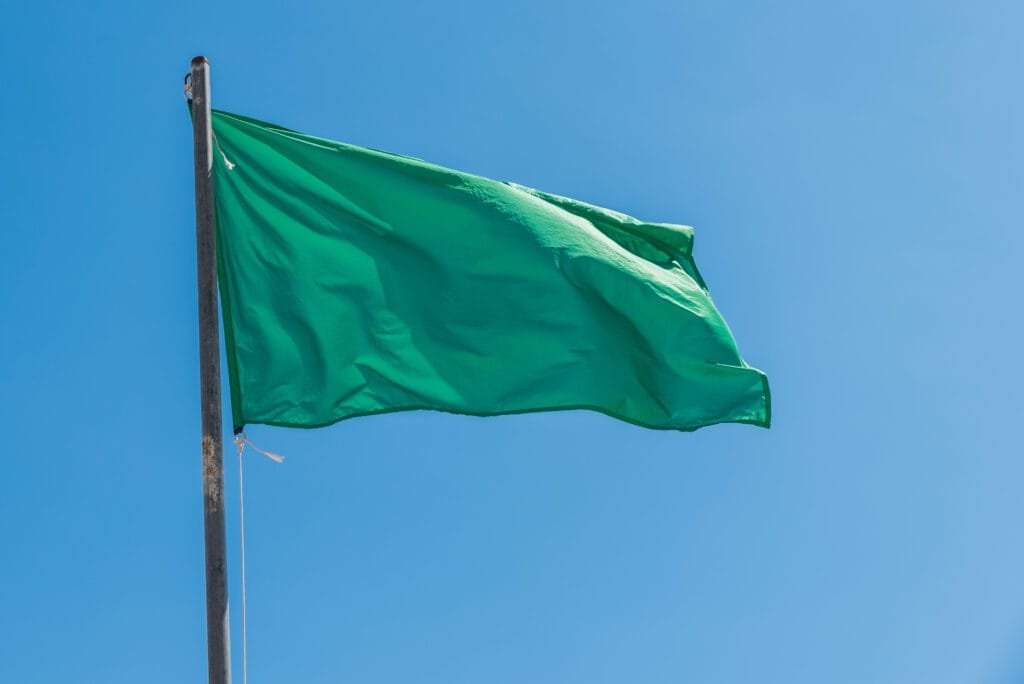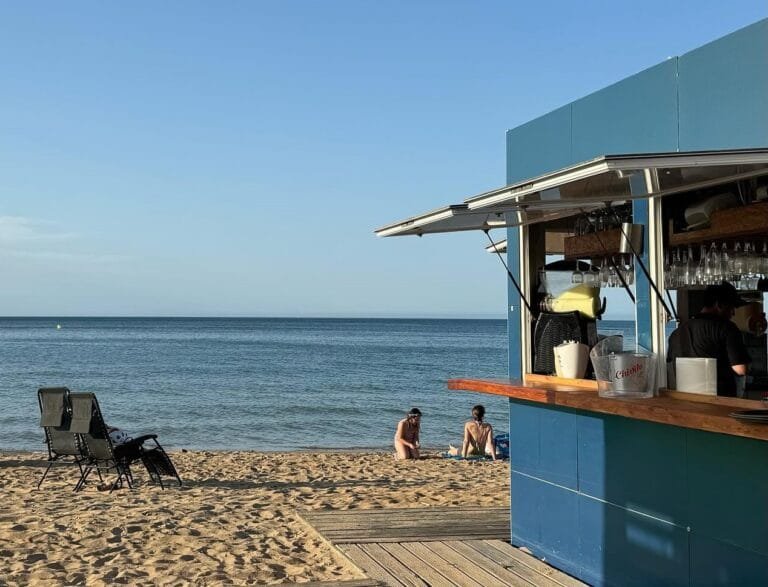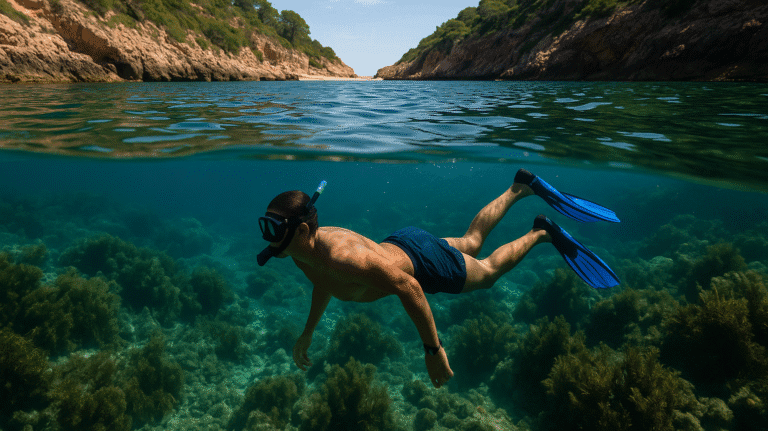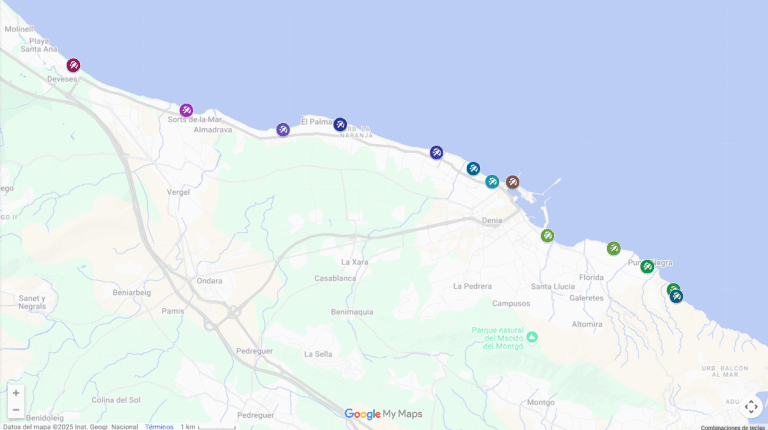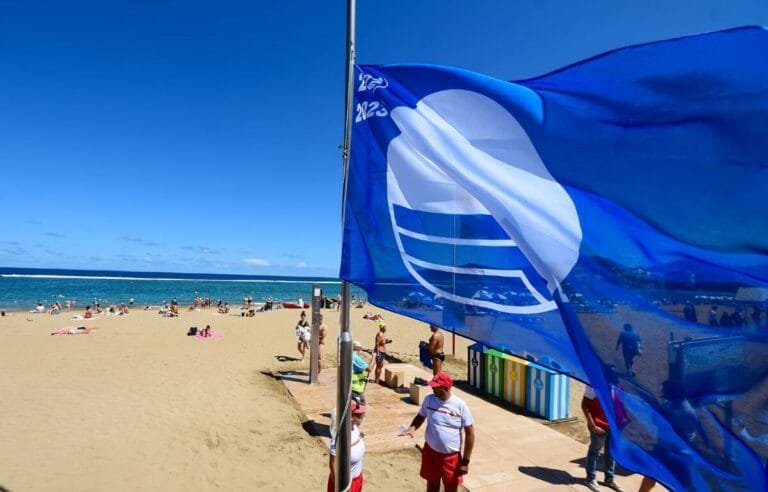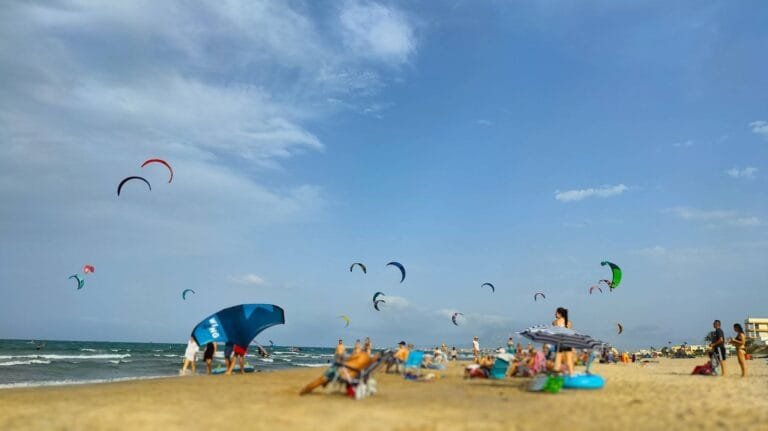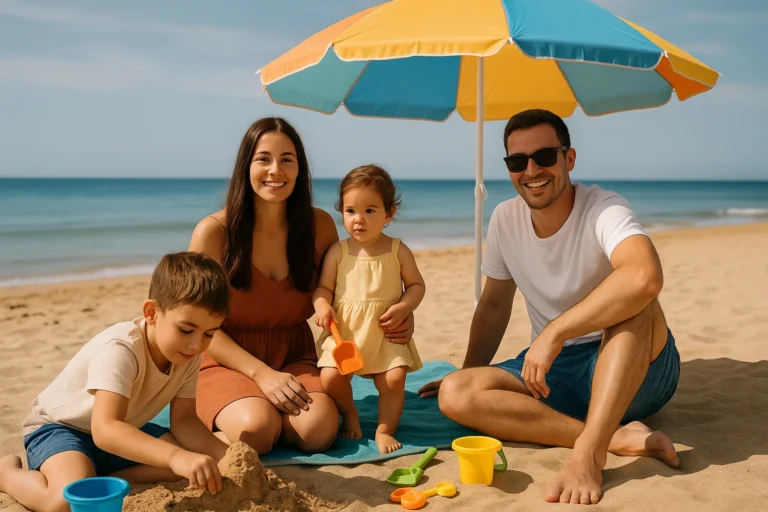If you’re about to set off with your towel and flip-flops to one of Dénia’s beaches, you’re probably asking yourself: Can I go for a swim today? Which flag is flying on the beach? But before you plunge into the sea (or decide to stay on the sand), there are a few things you should know. Understanding the flag system won’t just save you from a nasty surprise — it will also help you make the most of your day at the beach.
In Dénia, a trip to the beach isn’t only about sunshine and a parasol. Flags play a key role in telling you whether the sea is calm, if there are jellyfish about, or even if swimming is entirely prohibited for health or environmental reasons. And no, a yellow flag isn’t the same as a green one, even if the sky is blue.
So yes — I’ll tell you where you can check the flags today — but first let me give you something even more valuable: the information you need to interpret what those flags mean, why they’re raised, and how to act when you see each one.
How the beach flag system works
Beach flags are there for your safety because in just a glance they tell you what’s happening in the sea. And although they may seem simple, not knowing them — or ignoring them — can put you at real risk.

In Dénia, as in the rest of Spain’s coastline, the flag system is based on three main colours:
🟩 Green Flag: Enjoy with peace of mind
When the green flag is flying, it’s time to dive in! This signal means that sea conditions are perfect: no dangerous currents, no jellyfish in sight and good underwater visibility. It’s the ideal moment to swim, go snorkelling, or let the little ones splash about safely near the shore.
Dénia’s beaches are well equipped with easy access points, showers and facilities, and many proudly display the Blue Flag award — a mark of environmental quality and excellent services.
🟨 Yellow Flag: Caution, please
A yellow flag means you can swim, but you must be careful. It warns of conditions that may involve some risk, such as moderate currents, irregular waves, or the occasional presence of jellyfish.
What to do if you see this flag:
- Don’t venture too far from the shore.
- If there are jellyfish, avoid touching them — even if they’re on the sand.
- Follow the recommendations of the lifeguards.
🌿 Local tip: On yellow flag days, many families choose to walk along the shore or enjoy the water up to waist level. That way, they can still make the most of the beach without unnecessary risks.
🟥 Red Flag: No swimming
The red flag leaves no room for doubt: swimming is forbidden. It signals a serious and imminent danger such as strong currents, rough seas, nearby storms, or a high number of stinging jellyfish. Ignoring it can pose a real threat to your life.
What to do:
- Always respect this flag.
- Take the opportunity to stroll along the promenade, try a local beach bar, or explore Dénia’s old town.
- If you’re with children, explain to them why it’s important to follow the sea’s rules.
🚨 Remember: Lifeguards are there to protect you. Don’t put your life or theirs at risk by ignoring the signals.
🏴 Black Flag: Beach closed
Although rare, this flag indicates the complete closure of the beach, usually due to pollution or extremely dangerous conditions.
There are also complementary flags, such as:
- A white flag with purple jellyfish: presence of jellyfish in the water.
- Chequered flags: marking navigation or mixed-use areas to avoid accidents.
These symbols are the result of lifeguards’ expertise, weather alerts, water quality analysis, wave and current monitoring, or the presence of dangerous marine life.
So each morning, when the lifeguard raises a flag, they’re giving you the best guidance on whether the day is perfect for swimming, just dipping your feet, or staying on the promenade with a refreshing horchata.
Not all beaches are the same: those with Blue Flags

Blue Flags don’t indicate the state of the sea itself — instead, they’re a mark of environmental quality and excellent tourist services. In Dénia, seeing a Blue Flag flying is a guarantee that you’re on a well-kept beach with clean water, lifeguard services, regular cleaning, accessibility and sustainability measures.
You can check out our article on the seven Blue Flag beaches in Dénia for 2025.
🌍 Local tip: Look for the information board that usually accompanies these flags. There you’ll find details about the available services, accessible points, environmental rules and more.
Lifeguards in Dénia: where to find them
In Dénia, beach safety is a top priority. During the summer months, lifeguard stations are strategically located along beaches such as:
- Les Deveses
- La Almadrava
- Els Molins
- Les Bovetes
- Les Marines
- Punta del Raset
- La Marineta Cassiana
- El Trampolí
- The coves of Les Rotes
Dénia’s lifeguards are trained to respond to any emergency, provide first aid, guide swimmers, and monitor sea conditions. Their presence not only offers peace of mind but also contributes to the international prestige and recognition of the beaches.
🔵 Useful fact: Many lifeguard stations are located close to car parks and adapted access points, making it easier for families and people with reduced mobility to reach the beach.
Where to check the current flag status in Dénia

At last, the key point: how to know which flag is flying TODAY on each beach in Dénia. The best source is Safebeach — this website is updated daily by Dénia’s lifeguards and gives you a clear, real-time overview of:
- The flag on each beach (green, yellow, red)
- Whether jellyfish have been detected
- Wave conditions
- Water temperature
- UV radiation levels
- Current occupancy
- Weather data
🔗 Check everything here:
👉 Official Dénia beach status website
💡 Practical tip: Add the website to your favourites on your mobile. It’ll come in handy all week long.
Enjoying the sea wisely is always better than improvising
Dénia’s beaches are a true paradise, and their flag system, lifeguards and constant monitoring are a perfect example of how tourism can go hand in hand with safety and sustainability.
📌 On playasdenia.es you’ll find more content you’ll love if you’re planning to spend the day (or the whole week) in Dénia:
- What’s the weather like today on Dénia’s beaches?
Check real-time updates on temperature, wind, waves and UV radiation. - Alternative plans if you can’t make it to the beach
From hiking routes around Montgó to visiting the market or relaxing in a hidden cove. - Are there jellyfish on the beach today? How to spot them and what to do
Everything you need to know if you’re the type who dives straight in without checking first.
Did you find this article useful?
👉 Share it with your beach mates! Send it to your WhatsApp group, post it on social media or save it to your favourites. It could save you from doubts — or a last-minute change of plans.

